Five international artists create the NomansLanding project; Robyn Backen (Australia) Andre Dekker (Netherlands) Graham Eatough (Scotland) Nigel Helyer (Australia) and Jennifer Turpin (Australia) and jointly developed by Sydney Harbour Foreshore Authority, Glasgow Life and Urbane Künste Germany, Nomanslanding made its debut at Darling Harbour in April 2015, and later featured at the Ruhrtrienniale 2015 in Germany. In 2017 the project made its final appearance at the Tramway in Glasgow, Scotland as part of the Glasgow Life, Refugee Festival.
The project responded to a curatorial provocation, “Is it possible to create a site-specific work that can travel to three different locations?” Our reasoning was to work with both the shared histories of the three locations, each of which has a strong relationship to conflict in the twentieth century. All of them are re-imagining their urban structures as waterfront cities in a post-industrial age.
Foremost in our minds was a way to reinterpret the term “No-Mans-Land” which refers to the impasse, the place no one dares traverse, the gap of fear and uncertainty between two sides of tentative safety – a memory and metaphor inherited from the impossible stand-off of World War 1 trench warfare.
How can this empty space, this vacuum of devastation be poetically reimagined?
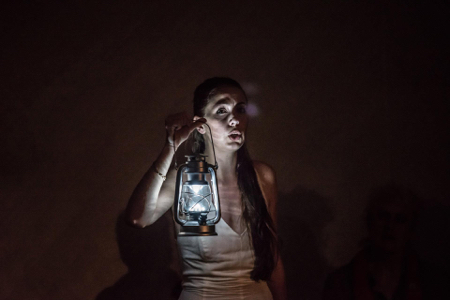
Wer mit Ungeheuern kämpft, mag zusehn, dass er nicht dabei zum Ungeheuer wird.
Und wenn du lange in einen Abgrund blickst, blickt der Abgrund auch in dich hinein.
He who fights with monsters should look to it that he himself does not become a monster. And when you gaze long into an abyss the abyss also gazes into you.
Nietzsche ”Beyond Good and Evil”, Aphorism 146 (1886).
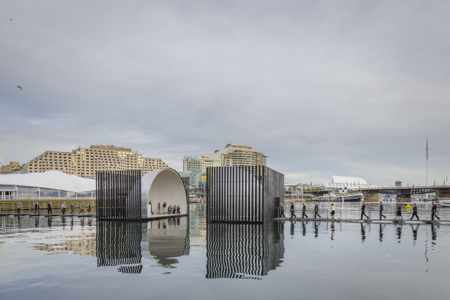
Nomanslanding at Cockle Bay, Sydney.
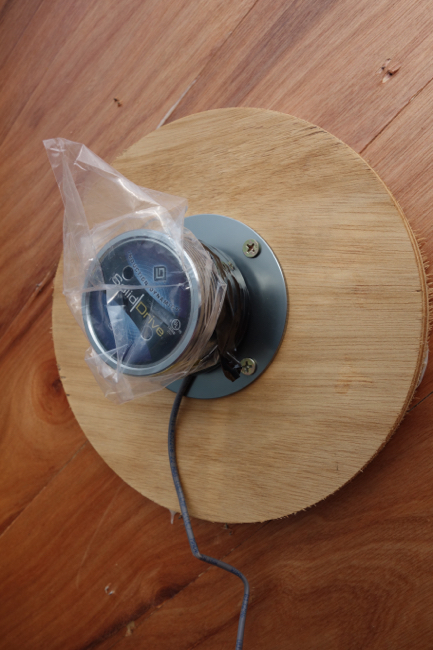
One of 20 audio resonators mounted on the dome exterior.
Nomansland
heavy grey keels scar the shoreline
knee deep, stumbling, men surge forward
buoyed by waves of fear
dreaming of the fields of Troy,
strategists calculate acceptable losses
sowing seed for an early harvest
and some fell on stony ground, some lay sleeping in rich loam
with a red chrysanthemum pinned to their foreheads
the lucky ones are sown together by the women
and in-between this nomansland offers equality
for all share equally in fear and doubt
and none are guaranteed a safe passage
by day men collect unlucky bullets
catch the slither of entrails
and scent the whiff of dried urine
by night drifts of foreign music
the scratch and sting of insects
and the rattle of coiled wire as corpses are recovered
while other corpses scratch out letters home
brew strong sweet tea
and laugh at their last obscene joke.
Nigel Helyer
nomanslanding from Nigel Llwyd William Helyer on Vimeo. A short video documentary by Ian Hobbs showing Nomanslanding in Cockle Bay, Sydney Harbour (2015).
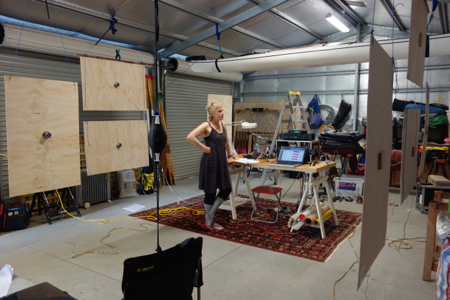
Working with Robyn Backen on a mock-up x8 channel audio-resonator rig
in Nigel’s studio at Old Erowal Bay.
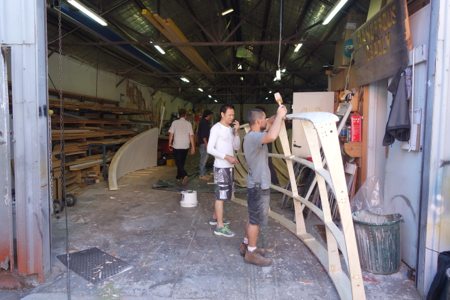
Sydney, development, construction and debut.
Nomanslanding is a sensory experience of transformation. The floating structures move slowly back and forth across the water to create and separate territory. Bridging the waterway the new ‘joint territory’ brings people together to experience, remember and contemplate.
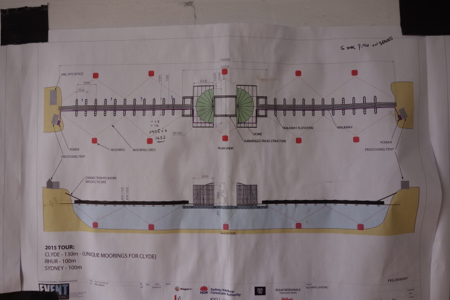
Nomanslanding Build from Nigel Llwyd William Helyer on Vimeo. A nice time-lapse taken during construction (courtesy Sydney Harbour Foreshore Authority).
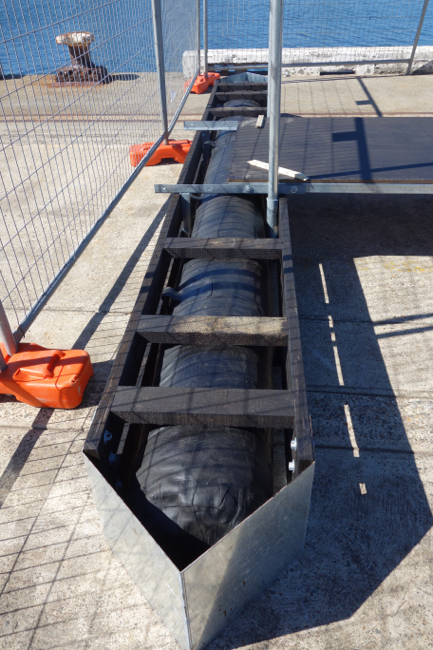
Floating Walkways
A pair of identical floating walkways are sited on opposing shores of waterways in Australia, Scotland and Germany.
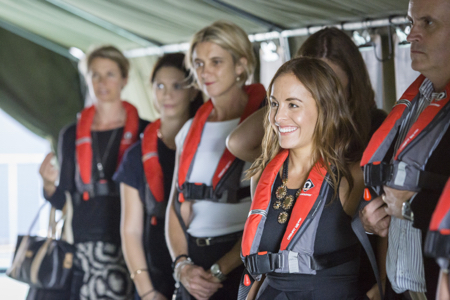
Initially installed in Sydney’s Darling Harbour, the floating walkways travelled to the Duisburg Ruhrort Ruhr district and finally to the Tramway in Glasgow. The walkways extend out to ‘meet’ halfway and then connect back to the shore.
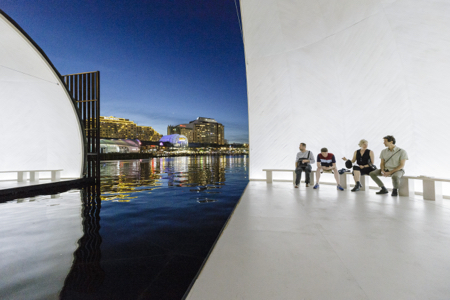
The Meeting of the Half Domes
Nomanslanding features two stretches of floating, extendable walkways, reminiscent of early 20th-century naval pontoon bridges. Visitors approach from opposing shores across the water, in an unfamiliar no-man’s-land, to arrive in a dome structure in the middle of the bay.
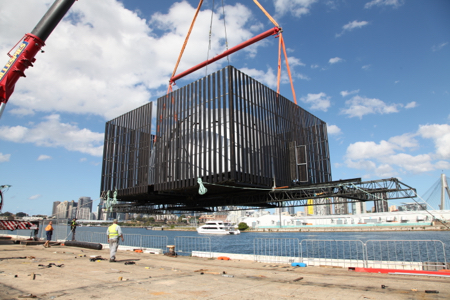
The dome structure is split in two allowing visitors to peer across a 10-m divide of water at each other – all the while with the city-scape of Sydney rising above them beyond the bay.
The two halves of the dome structure then move together, the gap between them diminishing, and visitors from opposing sides are united in a chapel-like, shared space for contemplation.
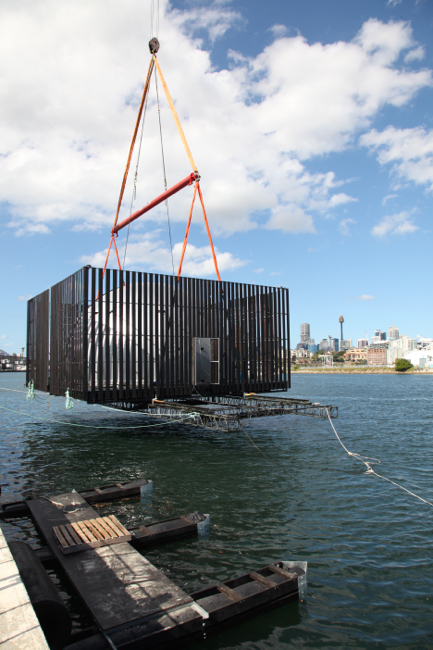
Acoustic Architecture
The experience is intensified by the acoustic qualities of the space. Like a ‘whispering gallery’, the sound of a voice is amplified in eerie reverberation.
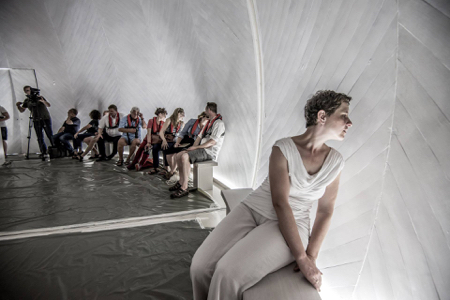
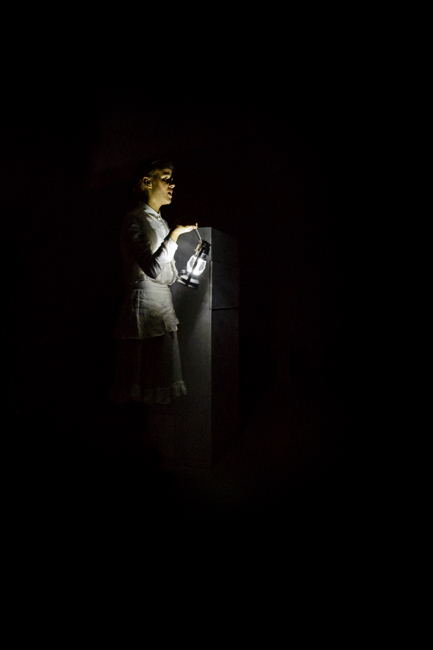
Within the dark dome the audience experience a multimedia installation/performance; dramatic soundscape, a vibrating cupola and poetry ricochet across the dome, leading the audience from terror to redemption.
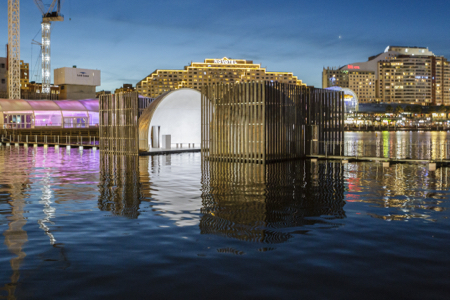
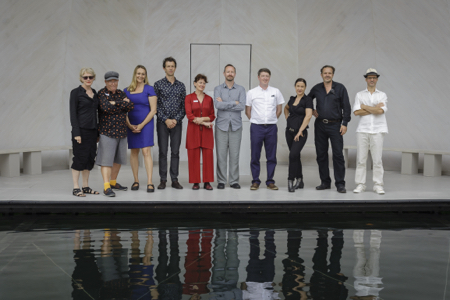
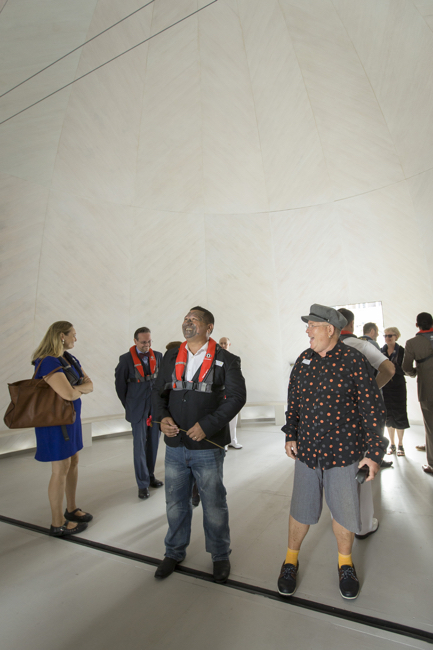
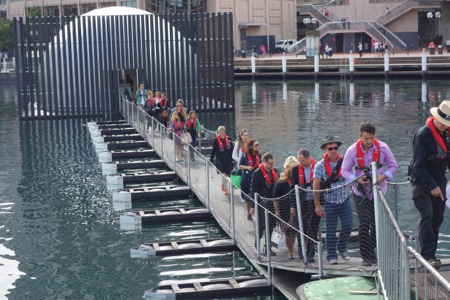
Ruhr Triennale.
The second exhibition of NomansLanding is as part of the Ruhr Triennale – here are some images from Duisberg/Ruhrort experience, images courtesy of Kreativquartier Ruhrort.
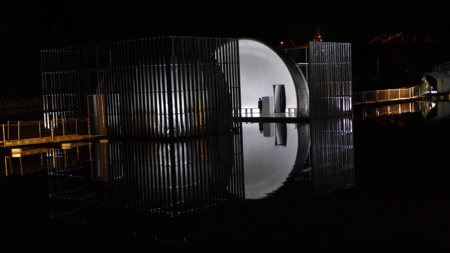
The work shown in Sydney and Duisberg functioned in an almost identical manner although the Ruhr Triennale version included additional narrative in German including one of my favourite quotes from Friedrich Nietzsche “Whoever fights monsters should see to it that in the process he does not become a monster. And if you gaze long enough into an abyss, the abyss will gaze back into you.”
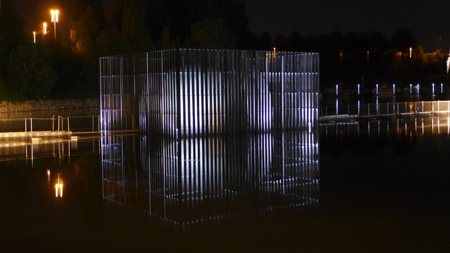
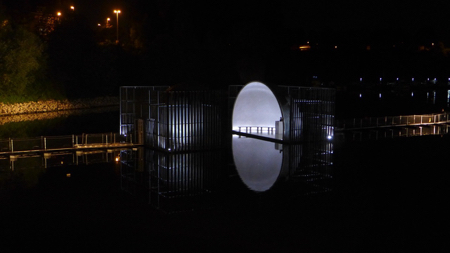
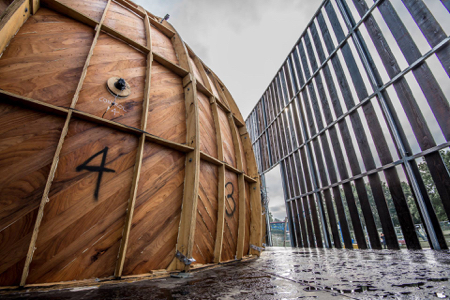
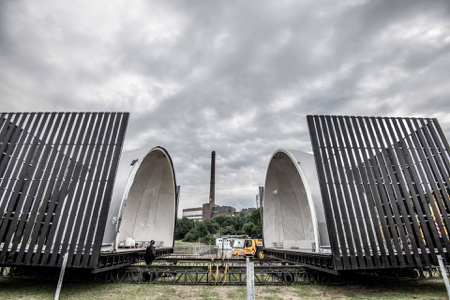
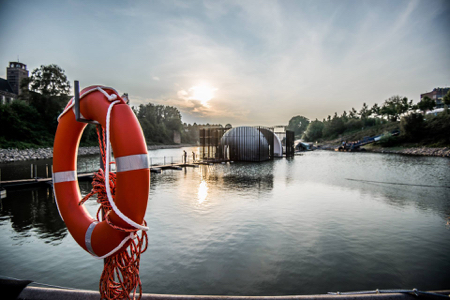
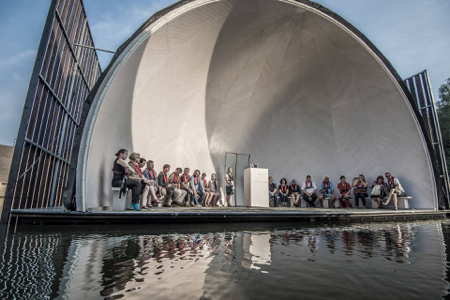
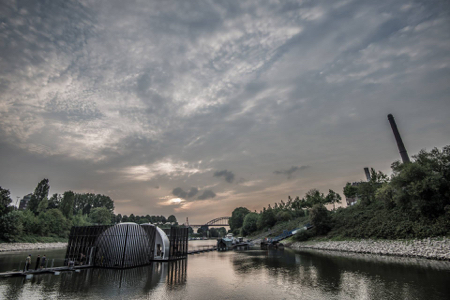
Glasgow.
For the final iteration of Nomanslanding, we were unable to access the River Clyde (for logistics and safety reasons). Initially the prospect of re-imagining such an ambitious project, which had already established itself as an iconic floating acoustic architecture in two international sites appeared daunting.
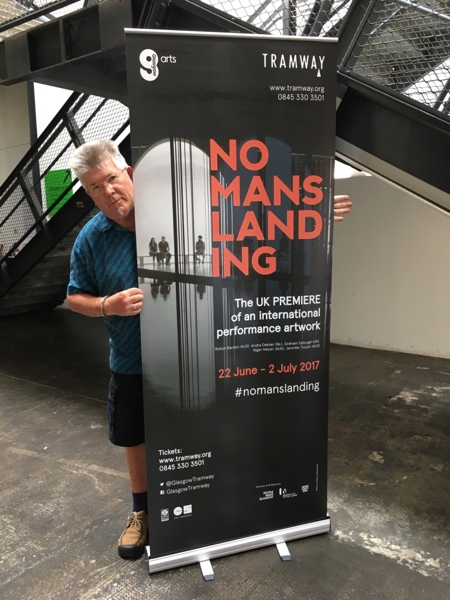
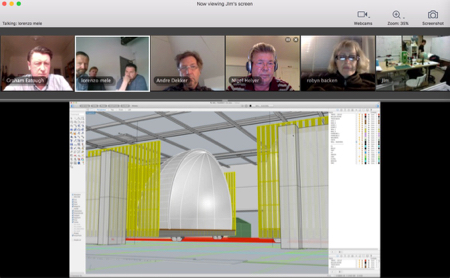
Theatre space of Tramway? Only just!
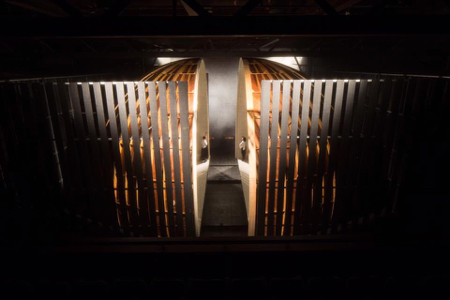
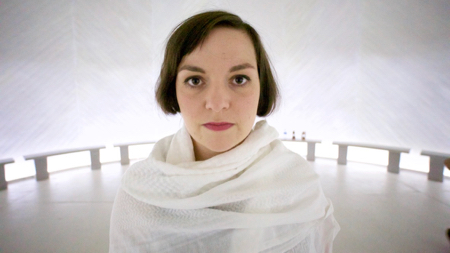
Ironically this challenge, coupled with the time constraints provided a huge impetus to create a radically new work, that embraced the benefits of a theatre environment to totally transform the Nomanslanding experience.
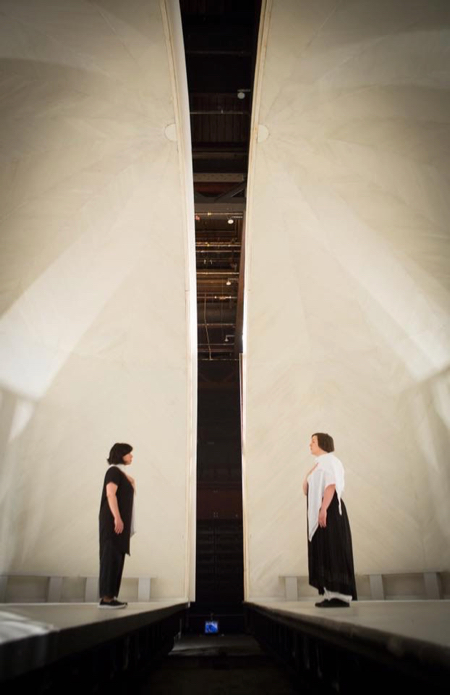
Our team worked closely with a group of international refugees as well as with two talented singers, adding a strong inflexion to the original theme of conflict and redemption. From a formal perspective, the work engaged strongly with the architecture of the theatre and in effect replaced water with darkness as the unstable element.
NoMansLanding at the Tramway Glasgow 2017 from Nigel Helyer on Vimeo.
Weblinks
http://archiv.ruhrtriennale.de/2015/de/nomanslanding
http://exeuntmagazine.com/reviews/review-nomanslanding-tramway-glasgow/